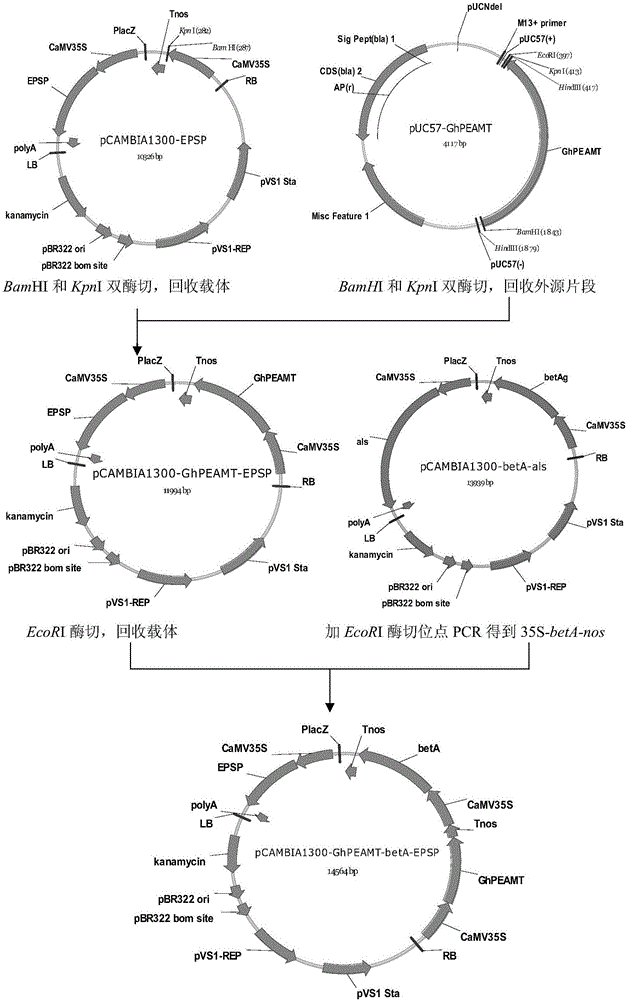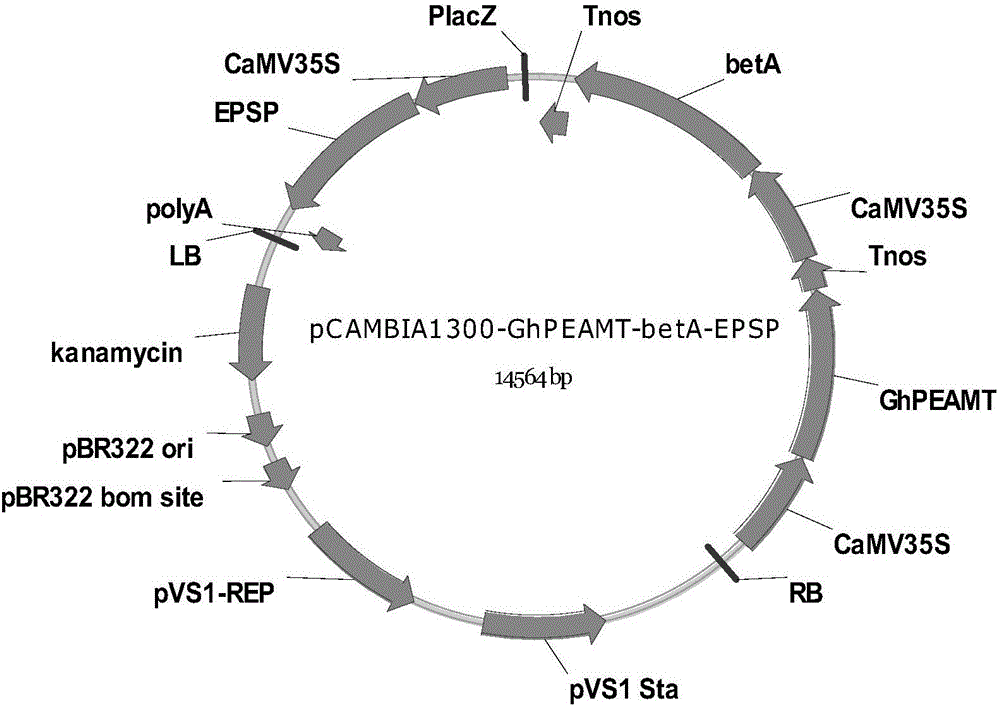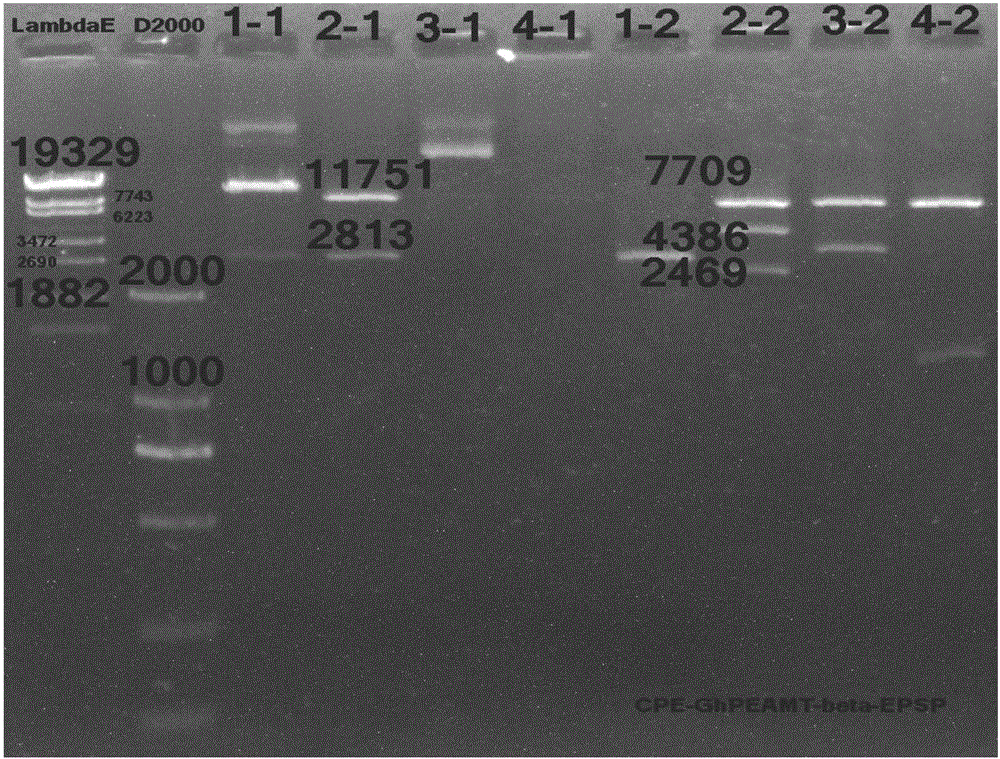Method for improving salt tolerance and drought resistance of cotton by increasing synthesis capability of betaine
A betaine and drought resistance technology, applied in the field of plant genetic engineering, can solve the problems of betaine increase, limited supply and the like, and achieve the effects of improving stress resistance, high salt and drought resistance, and improving salt and drought resistance.
- Summary
- Abstract
- Description
- Claims
- Application Information
AI Technical Summary
Problems solved by technology
Method used
Image
Examples
Embodiment 1
[0042] Example 1: Creating excellent cotton breeding materials that are resistant to salt and drought
[0043] 1. Construction of plant expression vectors
[0044] The target gene and the transgenic plant selection marker gene are inserted into the plant transgene expression vector through multi-step recombination using conventional molecular biology methods, wherein the construction process flow chart of the plant expression vector pCAMBIA1300-GhPEAMT-betA-EPSP can be found in figure 1 .
[0045] The target gene betA gene in this embodiment is the choline dehydrogenase gene from Escherichia coli. The GhPEAMT gene is a phosphoethanolamine-N-methyltransferase gene from cotton. The selectable marker gene is the herbicide resistance gene EPSP (EPSP: Enolpyruvylshikimate-3-phosphate synthase)
[0046] Specifically, the above-mentioned plant expression vector pCAMBIA1300-GhPEAMT-betA-EPSP recombination steps are:
[0047] BamHI and KpnI double digestion vector pCAMBIA1300-EPSP,...
PUM
 Login to View More
Login to View More Abstract
Description
Claims
Application Information
 Login to View More
Login to View More - R&D Engineer
- R&D Manager
- IP Professional
- Industry Leading Data Capabilities
- Powerful AI technology
- Patent DNA Extraction
Browse by: Latest US Patents, China's latest patents, Technical Efficacy Thesaurus, Application Domain, Technology Topic, Popular Technical Reports.
© 2024 PatSnap. All rights reserved.Legal|Privacy policy|Modern Slavery Act Transparency Statement|Sitemap|About US| Contact US: help@patsnap.com










